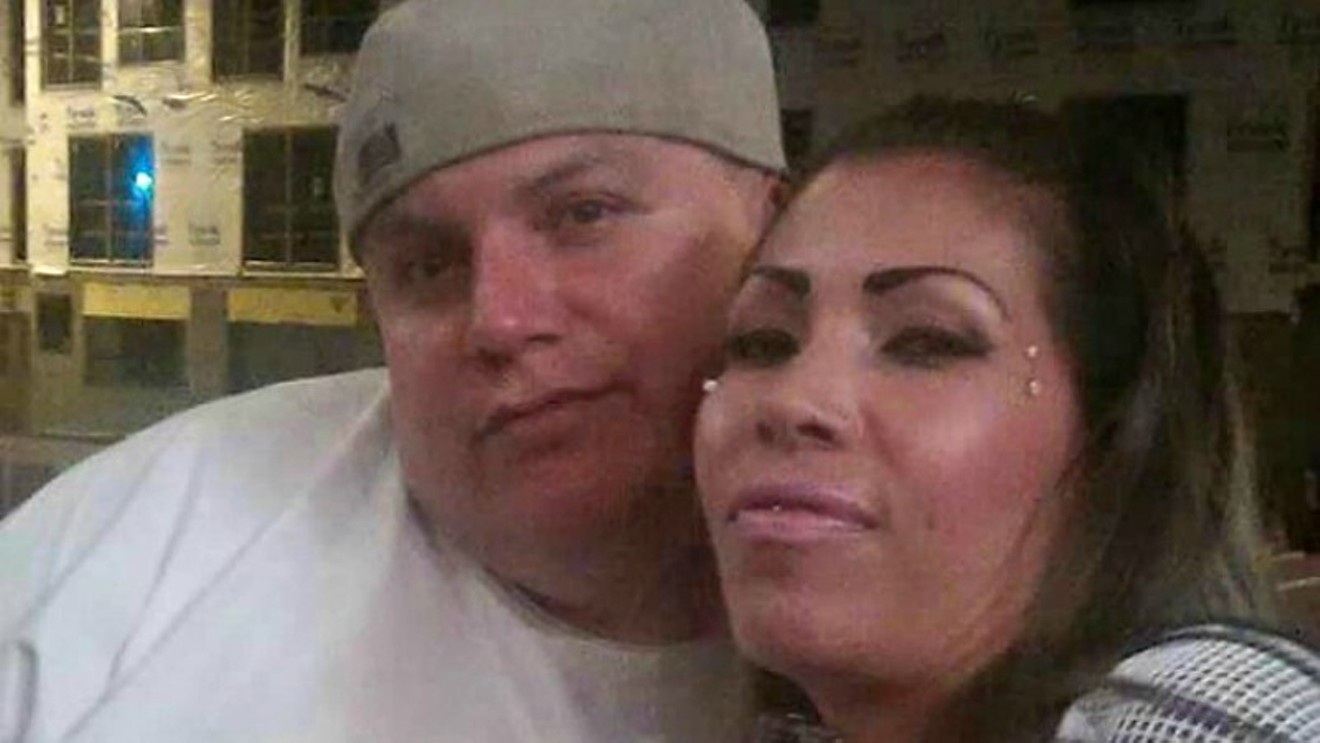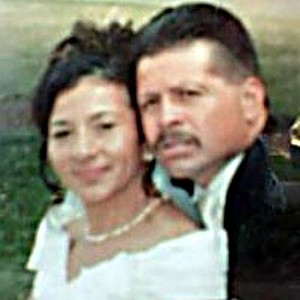The suit was filed on behalf of Damon's estate, including his wife, Dawn Aguirre, by two of Denver's leading civil-rights law firms, Killmer, Lane & Newman LLP and Holland, Holland Edwards & Grossman.
"In each and every one of these instances, the Denver DA found the shooting to be justified, conducted an investigation with the express outcome of exonerating the officer involved, and refused to pursue criminal charges against the officer," the document maintains.
The following excerpts from the suit include links to and photos from previous Westword coverage.
Number 1:
On the morning of January 26, 2015, teenager Jessica Hernandez was shot three times and killed by two Denver police officers. At the time Ms. Hernandez was shot, she was in a vehicle that had been reported stolen with four other teens. None of the teens had weapons. In all, the officers fired eight shots, including four that went through the driver’s side windows. As part of a subsequent coverup of the police officers’ actions, former District Attorney Mitch Morrissey determined the officers’ actions were legally justified and declined to file charges. In January, the police department determined that officers did not violate any policies and they would not be disciplined. In April 2017, Denver paid $1,000,000, along with other non-monetary consideration, to settle Ms. Hernandez’s family’s claims that the Denver police officers used excessive force.
Number 2:
On July 2, 2014, Joseph Valverde was shot and killed by Denver police officer Justin Dodge during a planned drug sting operation [as seen in the video above]. During the operation, multiple officers surrounded Mr. Valverde and told him to disarm himself and put his hands in the air. Mr. Valverde complied with these orders, discarding a gun in his waistband and raising his arms. As he raised his arms into the air, Officer Dodge shot and killed Mr. Valverde. Immediately following the shooting, and pursuant to Denver’s custom, policy, and practice of immediately initiating a coverup of unlawful, willful, wanton, and unconstitutional police shootings, the DPD issued a statement that Officer Dodge’s killing of Mr. Valverde was justified. Officer Dodge then made numerous false statements about Mr. Valverde and the circumstances of his death, including stating that Mr. Valverde pointed a gun at the officers on scene. This statement was clearly contradicted by video of the incident. Instead of disciplining Officer Dodge for his unconstitutional use of force, Denver’s Internal Affairs Bureau (“IAB”) declined to discipline Officer Dodge and, in fact, gave him an award. The Denver DA’s office also instituted a sham investigation aimed at exonerating Officer Dodge and declined to press charges against Officer Dodge despite significant evidence that he had unlawfully shot and killed Mr. Valverde.

Paul Castaway with a knife to his throat as he moves toward officers, as seen in surveillance footage from the tragic scene.
Denver District Attorney's Office via YouTube
In July 2015, Denver Police Officer Michael Traudt shot and killed Paul Castaway while Mr. Castaway was holding a knife to his own throat and standing at a significant distance from the officer. The officer made little attempt to talk Mr. Castaway down or arrest him using less lethal means prior to shooting and killing him. As is customary, the Denver DA refused to prosecute the officer involved and instead issued a decision letter with the purpose of inoculating the officer from liability and slandering the shooting victim. In his decision letter, the DA stated, “In this investigation, we are, once again, presented with a situation in which police officers are called to deal with someone who is violent, apparently suicidal, and who has an astounding combination of alcohol and controlled substances in his system. As is all too often the case, the actions and decisions of the subject place an officer who is attempting to take the subject into custody or ‘talk him down’ in an untenable situation: a situation where the officer will, in many instances, be driven by the subject’s actions to use some degree of physical force or deadly physical force.” The officer involved was not subject to any discipline by Denver after the conclusion of the IAB investigation, and Denver ratified his actions.

Sharod Kindell in the Denver Detention Center infirmary after being shot by a Denver police officer.
Photo by Anthony Camera
On January 9, 2015, Denver Police Officer Jeffrey DiManna shot Sharod Kindell during a routine traffic stop. Mr. Kindell was unarmed. During the traffic stop Mr. Kindell refused to get out of his car and multiple police officers forced him out. As they did so, the car, which was still in gear, moved in reverse. Mr. Kindell ran from the police officers and was shot again, while fleeing and unarmed. The Denver DA found the shooting to be justified and no officer was disciplined for their role in the shooting of Mr. Kindell.
Number 5:
On November 20, 2014, a Denver Police Officer shot Joel and Carlos Jurado through the passenger-side window after a vehicle pursuit. The Denver police officers, Ernest Sandoval and Jeff DiManna (who went on to shoot Kindell), shot at the Jurados as they drove away. The Jurados were unarmed. Upon information and belief, no officer was disciplined for their involvement with the shooting of the Jurados.
Number 6:
On May 15, 2009, Altagracia Medina Valencia filed a lawsuit on behalf of her deceased husband against the City and County of Denver, Denver Police Chief Gerry Whitman, and eight unknown John Doe Denver Police Officers. Ms. Valencia alleged that, while her husband, Odiceo Valencia-Lopez, was attending his daughter’s communion, he suffered a self-inflicted knife wound to the wrist. When his family called for an ambulance, the call was routed to Denver Police. Mr. Valencia-Lopez was standing by his vehicle with the knife in his hand when he was surrounded by six to eight officers with their weapons drawn. The officers ordered Mr. Valencia-Lopez to drop the knife, but due to his lack of understanding of English, blood loss, and intoxication, he did not understand their commands. An officer then tased Mr. Valencia-Lopez, causing him to drop the knife. After Mr. Valencia-Lopez was tased and dropped the knife, the other officers began shooting him. He was shot approximately seven times, in front of his entire family. He died at the scene. The case was settled for an unknown amount.
Number 7:
On December 29, 2009, Vicki Lynn Trujillo filed a lawsuit on behalf of the Estate of Jason Gomez against the City and County of Denver, Denver Police Chief Gerald Whitman, and Denver Police Officer Timothy Campbell. Ms. Trujillo alleged that Officer Campbell began pursuing Mr. Gomez without reasonable suspicion or probable cause. When Officer Campbell confronted Mr. Gomez, he ordered Mr. Gomez to kneel on the ground and pointed his gun at him. Officer Campbell repeatedly shouted that he was going to kill Mr. Gomez. When Mr. Gomez, who was unarmed, stood up and began running from Officer Campbell, Officer Campbell shot him in the back. The bullet perforated Mr. Gomez’s spinal column. Officer Campbell then fired a second round of shots, hitting Mr. Gomez twice in the chest, once in the abdomen, once in the right thigh, and once in the left knee. Mr. Gomez died from multiple gunshot wounds. The case was settled in December of 2012 for $190,000.
Number 8:
On January 6, 2006, Francisco Juan Lobato, Anthony Lobato, Barbara Lobato, and Ramona Lobato filed a lawsuit on behalf of the estate of Frank Lobato against the City and County of Denver, Denver Police Chief Gerald Whitman, and Denver Police Officers Ranjan Ford, Jr., Joshua Herrick, Gene Sharla, Robert Shiller, Charles Kyle, Steven Addison, and unidentified John and Jane Doe Officers. The Lobatos alleged that the Defendant Officers entered the Lobato home without a warrant looking for a suspect. Frank Lobato was sleeping in his bed at the time the officers entered the home and was unarmed. When the officers were unable to locate the suspect, they entered Mr. Lobato’s bedroom and shot and killed him. Denver paid $900,000 in 2007 to settle the lawsuit.
Number 9:
In 2004, Denver paid the family of Paul Childs $1.32 million to settle a lawsuit brought after Mr. Childs, a developmentally disabled 15-year-old boy, was fatally shot by Denver Police Officer James Turney. Officer Turney responded to a 911 call from Mr. Childs’ sister, and when he arrived at the house, Mr. Childs was holding a knife. When Mr. Childs refused to drop the knife, Officer Turney shot and killed him. Two other officers were in the house with non-lethal tasers, which were not used. Mr. Childs’ mother informed officers that he was a “special needs” child, but they nonetheless shot him from the front door while he was standing in the hallway.
Number 10:
On February 25, 2004, Regina Keith filed a lawsuit on behalf of the estate of Gregory Lee Smith, Jr. against the City and County of Denver, Denver Police Chief Gerald Whitman, Denver Police Officers Robert Silvas and Jim Turney, and unknown John Doe Officers. Ms. Keith, Mr. Smith’s mother, alleged that the officers arrived at her home after she called 911 for assistance with a domestic dispute. When they arrived, Mr. Smith was in his bedroom. Mr. Smith then exited his bedroom with a three-inch utility knife. The officers ordered him to drop the knife, and when he didn’t, they fatally shot him. The individual officers settled the case for an unknown amount.
Click to read Estate of Dion Damon v. The City and County of Denver and Officer Jeffrey Motz.


















